Interesting Things To Know About Jagannath Temple
By: Priyanka Maheshwari Wed, 06 Sept 2023 12:51:41
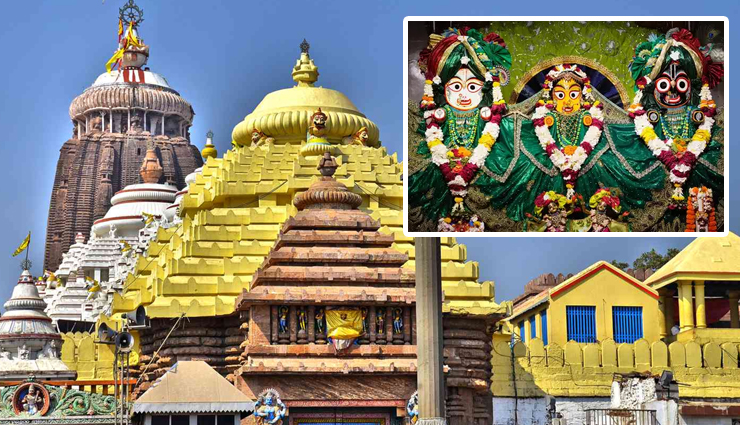
Within India, there exists a concept known as Char Dham, which translates to "Four Abodes" in English. These four locations hold the highest significance for pilgrimage and devotion in the country, being closely associated with Lord Vishnu. They attract millions of dedicated tourists annually.
The quartet of these abodes, known as the Dhams, includes Badrinath, Jagannath Puri, Dwarka, and Rameshwaram. In this article, we will delve into the enigmatic Jagannath Temple located in Puri and explore what sets it apart as a place of profound significance.
Story Behind the Temple
Numerous legends are intertwined with the Jagannath Temple, and one of the most captivating tales recounts its origin. It is said that King Indrayumna, upon witnessing the miraculous appearance of an image of Lord Vishnu beneath a venerable banyan tree in Puri, took it upon himself to construct the temple.
The image held a remarkable reputation, believed to bestow instant and everlasting peace upon those fortunate enough to behold it. Driven by a deep desire for eternal tranquility, King Indrayumna embarked on a rigorous penance to acquire the coveted Indranila Mani, also known as the Blue Jewel.
In response to his penance, Lord Vishnu materialized before the king and imparted divine instructions. He directed King Indrayumna to procure a log of wood from the shores of Puri's seashore.
Following the successful retrieval of the log, the king was entrusted with the task of crafting the sacred murtis (idol representations) within the temple. Remarkably, Lord Vishnu himself assumed the guise of a carpenter to undertake this sacred construction, on the condition that he must remain undisturbed until the completion of the murtis.
However, fate took an unexpected turn when the queen, driven by curiosity, insisted on opening the temple doors due to the prolonged silence of the carpenter. This untimely interruption in Lord Vishnu's work is believed to be the reason why the murtis within the temple are portrayed without arms.
Over time, a grand temple complex, as we see it today, was erected around these sacred murtis. These murtis are revered as divine guardians, watching over the world and safeguarding it from harm.
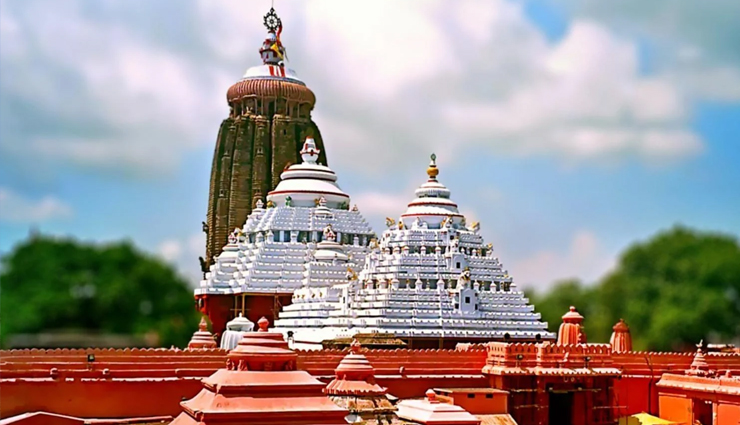
Indrayumna’s Prayer
In an alternative narrative, it is recounted that King Indrayumna, in an endeavor to awe Lord Vishnu, constructed the temple to be the tallest edifice on the entire planet. Upon its completion, the King extended a heartfelt invitation to Lord Vishnu to visit and witness the grandeur of the temple.
Upon inspecting the temple, Lord Vishnu was delighted and offered the King a boon, granting him the power to request any wish. In response, the King made a rather unconventional request. He asked that he never be blessed with offspring and that his lineage would cease with him. In making this request, he aimed to ensure that his future generations would not be burdened with the responsibility of contributing to society's betterment. Instead, they would be destined to carry on a senseless pride in their ownership of the temple.
History
While the temple retains its exquisite beauty, it has endured numerous incursions throughout its history. According to historical records, the temple has suffered from pillage and ransacking on no less than eighteen occasions.
In an effort to safeguard the temple, King Aurangazeb, belonging to the Mughal dynasty, issued a decree for its closure. From 1692 to 1707, the Jagannath Temple was secluded from the public eye, only reopening following King Aurangazeb's demise.
These incursions have left enduring and detrimental repercussions on various aspects linked to the temple. Presently, the temple is accessible solely to adherents of the Hindu faith. While Buddhists, Jains, and Sikhs are regarded as sister religions and are permitted entry, individuals from other religious backgrounds, such as Muslims, Christians, Parsis, and Jews, continue to be prohibited from entering the temple.
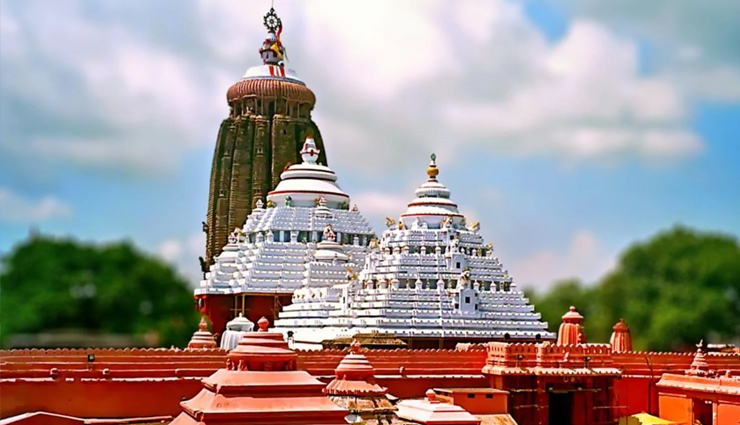
Indrayumna’s Prayer
In an alternative narrative, it is recounted that King Indrayumna, in an endeavor to awe Lord Vishnu, constructed the temple to be the tallest edifice on the entire planet. Upon its completion, the King extended a heartfelt invitation to Lord Vishnu to visit and witness the grandeur of the temple.
Upon inspecting the temple, Lord Vishnu was delighted and offered the King a boon, granting him the power to request any wish. In response, the King made a rather unconventional request. He asked that he never be blessed with offspring and that his lineage would cease with him. In making this request, he aimed to ensure that his future generations would not be burdened with the responsibility of contributing to society's betterment. Instead, they would be destined to carry on a senseless pride in their ownership of the temple.
History
While the temple retains its exquisite beauty, it has endured numerous incursions throughout its history. According to historical records, the temple has suffered from pillage and ransacking on no less than eighteen occasions.
In an effort to safeguard the temple, King Aurangazeb, belonging to the Mughal dynasty, issued a decree for its closure. From 1692 to 1707, the Jagannath Temple was secluded from the public eye, only reopening following King Aurangazeb's demise.
These incursions have left enduring and detrimental repercussions on various aspects linked to the temple. Presently, the temple is accessible solely to adherents of the Hindu faith. While Buddhists, Jains, and Sikhs are regarded as sister religions and are permitted entry, individuals from other religious backgrounds, such as Muslims, Christians, Parsis, and Jews, continue to be prohibited from entering the temple.
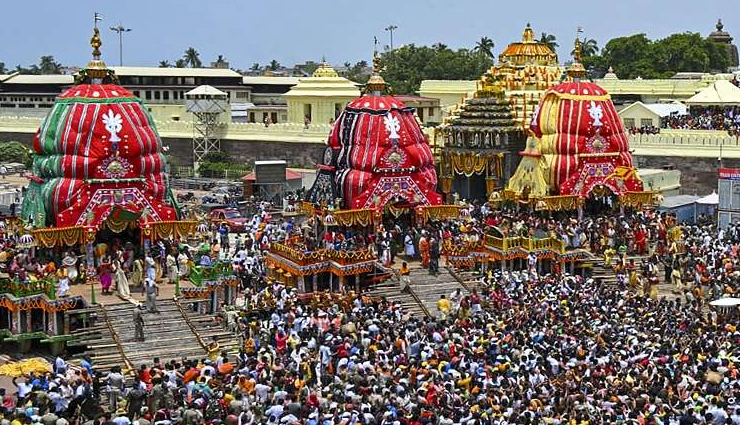
Rath Yatra
The Rath Yatra, also known as the Chariot Festival, is an enormous annual event that unfolds in Jagannath Puri and holds the distinction of being the largest of its kind globally. Scheduled for a date in July, this grand occasion draws an attendance exceeding one million devotees.
During the Rath Yatra, the sacred murtis are carefully removed from their temple abodes and placed atop colossal chariots. These chariots are then meticulously pulled by enthusiastic devotees in a massive procession, ultimately reaching another temple called the Gundicha Temple, situated a few miles to the north.
The murtis remain at the Gundicha Temple for a duration of seven days before being reverently returned to their original sanctuaries. On the homeward journey, a significant stop is made at a third location known as the Mausi Maa Temple, where a special culinary offering takes place. Among the dishes prepared, Poda Pitha, a unique type of pancake, holds particular significance as it is believed to be Lord Vishnu's favorite.
The Rath Yatra in Jagannath stands as one of the most prominent religious events in the country. Devotees meticulously plan for this occasion months in advance, eagerly anticipating the opportunity to come together with like-minded worshippers in a celebration of spiritual joy.
Saints Associated with the Temple
The Jagannath Temple boasts a storied history enriched by the visits of some of the most esteemed Hindu philosophers and acharyas.
Madhvacharya, a distinguished Hindu philosopher renowned for his advocacy of dualism, a fundamental tenet in Hinduism, is documented to have made a pilgrimage to this sacred site. Additionally, Adi Shankara, the eminent Hindu acharya celebrated for harmonizing the diverse schools of Hindu thought, established his Govardhana Matha in this revered locale.
Furthermore, there is historical evidence attesting to the presence of prominent religious figures such as Kabir, Tulsidas, and Guru Nanak at this hallowed destination. Other illustrious philosophers who graced the temple with their presence include Nimbarkacharya, Vallabhacharya, and Sri Chaitanya Mahaprabhu.
Many of these revered saints undertook rigorous fasts that extended over several days, further fortifying the temple's profound spiritual legacy.
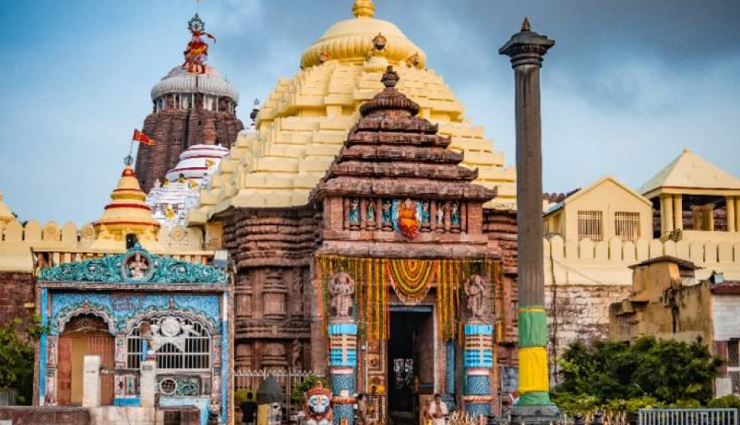
Mysteries
Jagannath Puri is a place replete with enigmas that challenge conventional scientific understanding. Devotees perceive these mysteries as evidence of cosmic intervention, which further solidifies their faith and provides them with additional motivations to make pilgrimages to the site.
Regarding the Temple Flag, an intriguing anomaly exists: it consistently unfurls in a direction contrary to the prevailing wind. This curious behavior defies explanation, perplexing observers who cannot fathom why it behaves differently from conventional flags.
A phenomenon akin to no-fly zones is observed in Jagannath Puri, where neither birds nor planes traverse the airspace above the temple grounds. Remarkably, this restriction is not enforced by any official authority; it simply occurs inexplicably, adding to the mystique of the location.
The temple's main dome, often referred to as the Ghost Dome, possesses a peculiar quality—it never casts a shadow. Regardless of the time of day or the sun's position, this central dome stands resolutely without creating a shadow. While it might be an architectural marvel, its ability to defy shadow is indeed impressive.
In the realm of culinary marvels, the Jagannath Temple holds a special place, as it is believed that Lord Vishnu dines here. Housing the world's largest kitchen, the temple prepares sustenance for an astonishing 100,000 individuals daily. Astonishingly, the kitchen consistently produces precisely the right amount of food, irrespective of the number of visiting tourists. There is never a shortage or surplus of provisions, an uncanny occurrence that leaves observers in awe.





